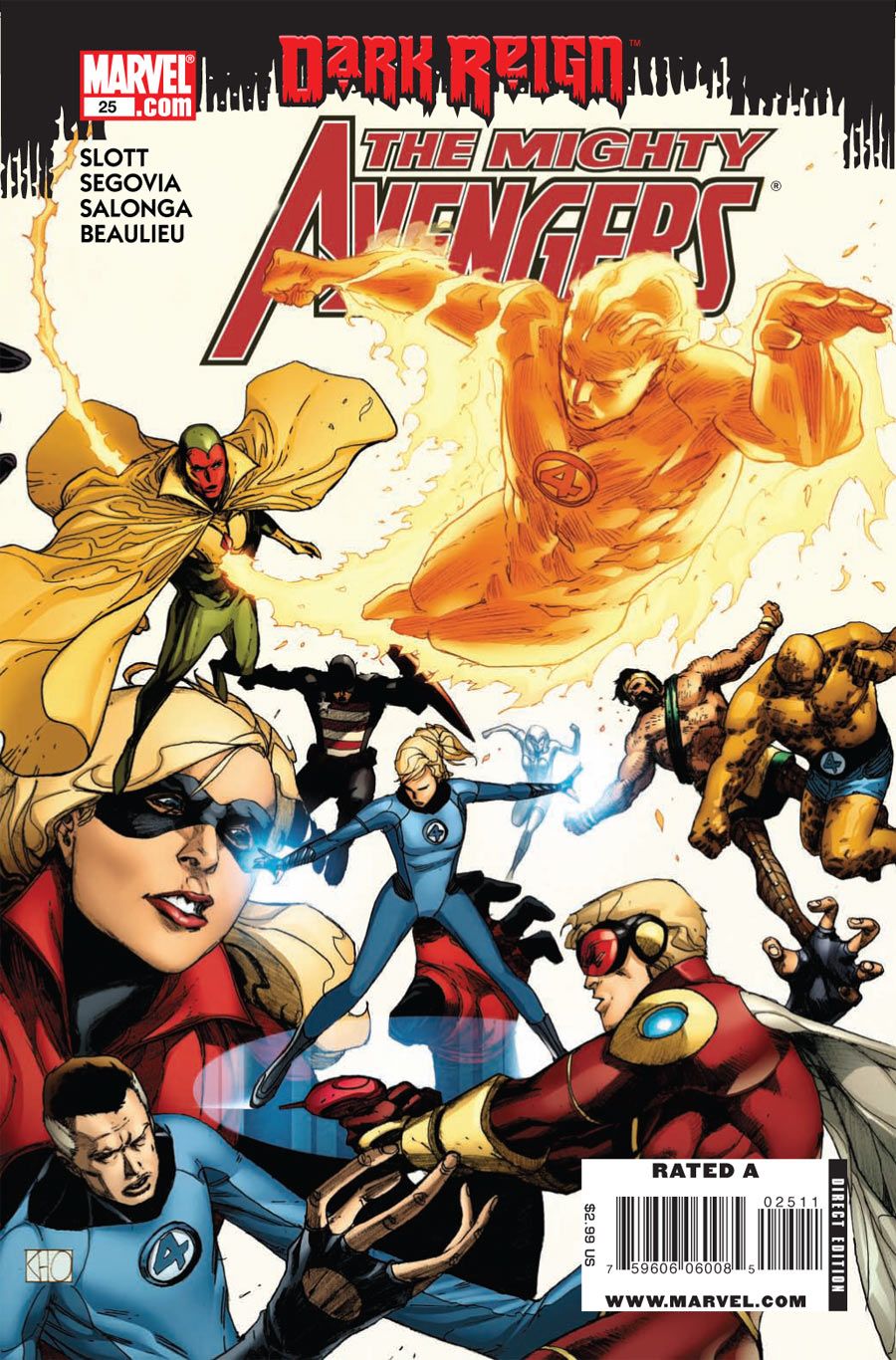PymSpace, the makeshift headquarters for this version of the Avengers, is collapsing on itself. This causes Henry Pym to act in an irrational manner as he scrambles against time to save his work. As the clock ticks, Pym's first attempt to preserve his lab leads him to ask Reed Richards for help. Richards is in possession of the Dimensional Wave Inducer. The Inducer was co-created by Henry Pym and Bill (Goliath) Foster. Upon Goliath's death, the Inducer was bequeathed to the Thing.
No love lost between Richards and Pym, their conversation turns sour when Richards claims to possess greater knowledge of Pym Particles. Slott continues to build a case of the world ganging up on Henry Pym, contributing to the inferiority issues Pym has succumbed to before. Pym's complexities shine through though, as he refuses to allow the world to knock him down any longer. Here, for Richards to call Pym out and refuse to assist him, Pym snaps and quips, "It's on, bitch." No longer content to ask, Pym is determined to have his Avengers recover the Dimensional Wave Inducer by force. Slott adds more nuggets of Marvel Comics goodness to the story by bringing in image inducers, Stature's ties to the Fantastic Four, and Salvation Two -- the mysterious device that drives Pym's quest to save PymSpace.
Slott gives these characters wonderful voices, finding nuances within each. From Hercules itching to brawl to Cho seeking Cassie's approval before once more donning the Ant-Man helmet, these characters are well written. The one uneven patch in Slott's characterizations is Richards' gruff refusal to assist a colleague. Slott offers up enough explanation to make that seem within the realm of possibilities for the aloof Reed Richards.
Stephen Segovia and Noah Salonga step in for the art chores, offering a style that floats between Khoi Pham, Tan Eng Huat, and Leinil Yu. The characters look vibrant and energetic, and the storytelling is crisp. Segovia gives us characters that are striking. He does a great job having characters erupt from the panel -- especially in Pym's lab, where everything is topsy-turvy. My biggest criticism of Segovia's art is that all of his females -- including Jocasta -- seem to be posing for a calendar or photo shoot. The first we see of each of them, their hands are on their hips and their stance is highly stilted.
Segovia is ably assisted by Noah Salonga on inks. Salonga brings weight and shadow to the characters, using cross-hatching, but not overly so. He also employs spotted blacks to take control in several instances, effectively blotting out the background to add a stronger visual pop to the foreground imagery.
The coloring is a tad on the overwhelming side more often than not. Granted, this is largely a by-product of the collection of garish uniforms donned by the cast of heroes. Beaulieu seems entranced by the lights he is coloring as those are the most vibrant pieces of any panel. This leads him to then add strong reflections on many of the surfaces, almost to the point of distraction. Beaulieu's style of coloring is a break from the norm in that shades and highlights don't conform to the rendered shapes, but rather insinuate new shapes. Overall this style takes a few pages to adjust to, but it really is quite lovely when re-viewed.
This issue sets up an almost certain throw down between the two teams next issue. In doing so, it also provides a bit of a breather from the frenetic pace "Mighty Avengers" has kept since Slott jumped on board. Even though Pym and crew are racing against the clock, this issue is a little more relaxed, allowing for some revealing character moments, such as Quicksilver's inner dialog during his conversation with Pym. Moments like that show Slott's sense of balance between the action Avengers should have and the finer character moments Marvel expects in its comics. This is Marvel's finest "Avengers" title, truly worthy of the brand.

